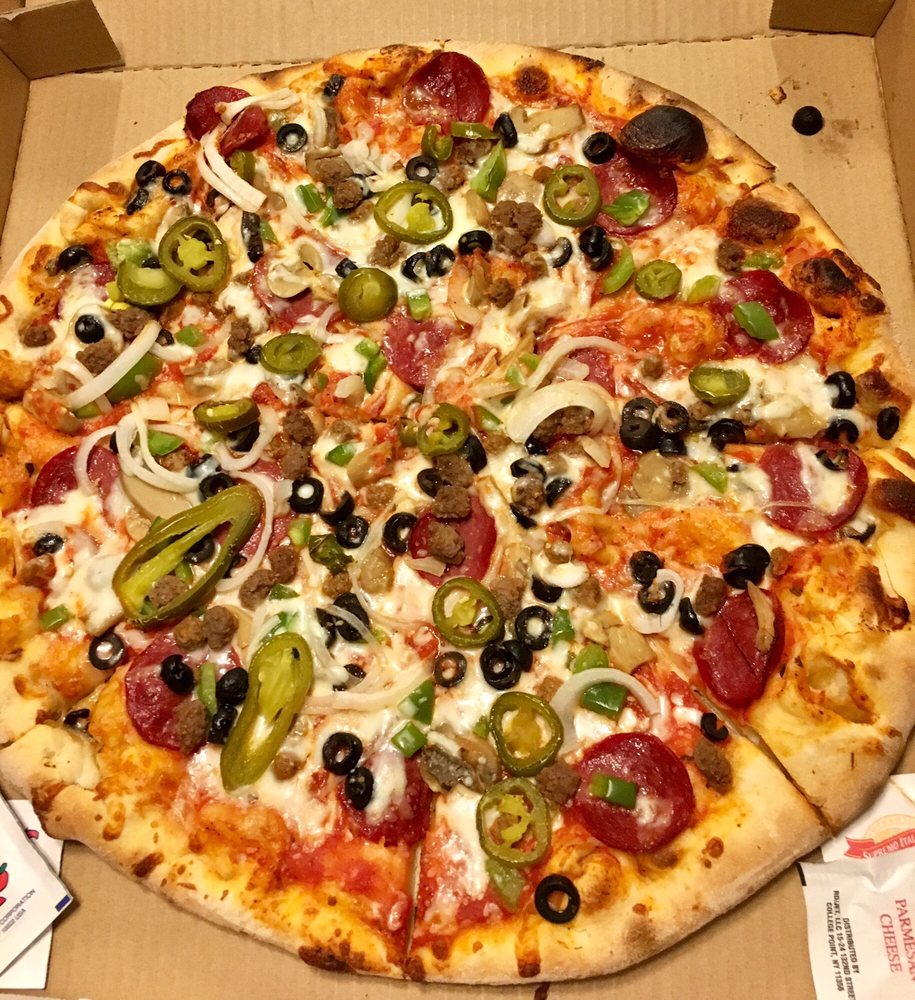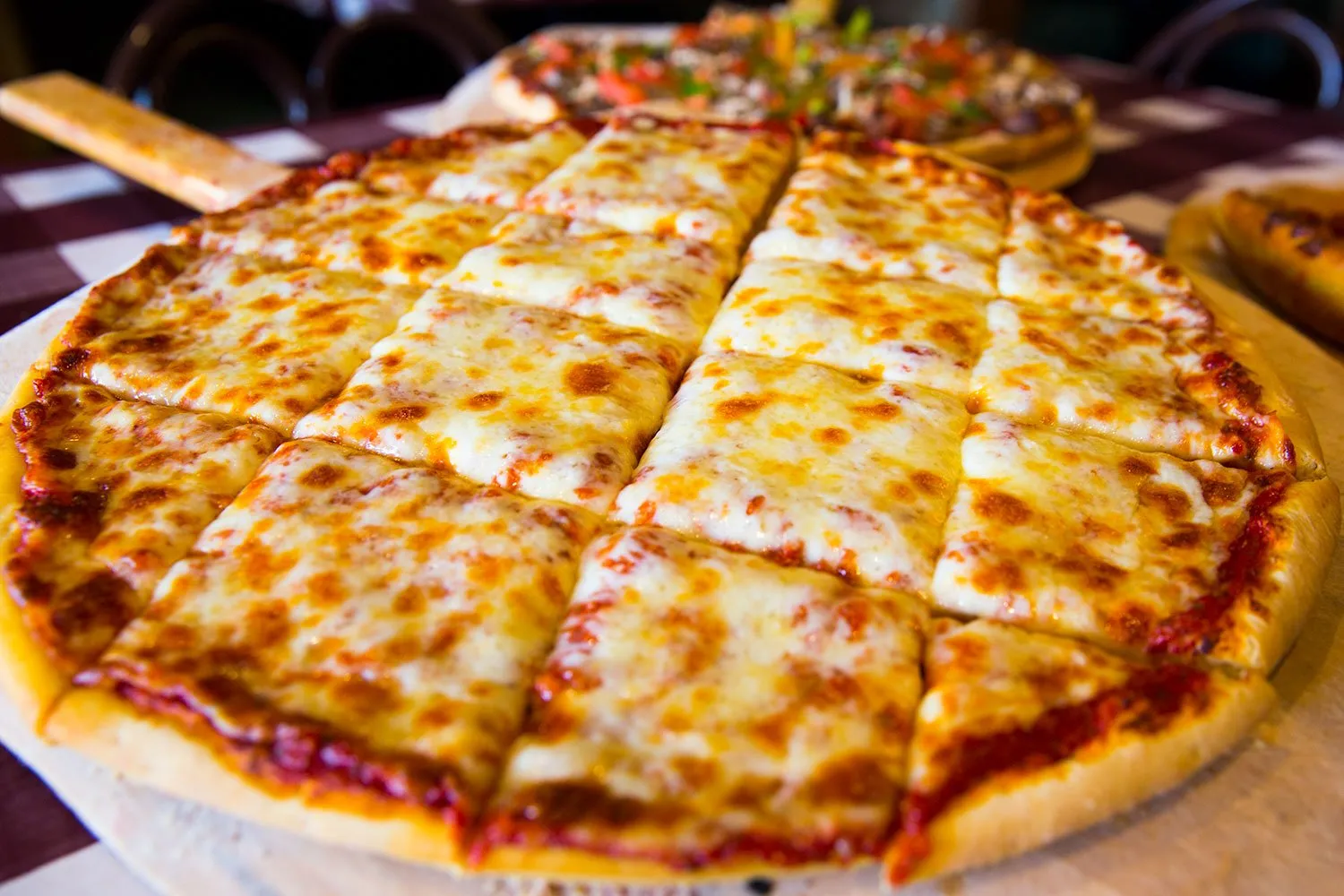A cultural haven that honors the lively energy and delectable cuisine of Italy, Little Italy is tucked away in the center of busy cities all over the world. Of all the Italian treats available in these neighborhoods, pizza is one that sticks out as a timeless representation of Italian-American cooking. We will go into the history, taste, and cultural relevance of Little Italy pizza in this piece, attempting to convey the spirit of this cherished culinary custom.
The History of Pizza from Little Italy
An American Taste of Italy
The modest street dish known as pizza first appeared in Naples, Italy, and was favored by the working class there. But it was in the vibrant immigrant communities of New York City, especially Little Italy, that pizza became widely accepted in the country. Italian immigrants created pizzerias that quickly developed into gathering places for the community, bringing with them their culinary traditions, which included the art of baking pizza.

Little Italy Pizza’s Tastes
An Optimal Combination of Ingredients
Little Italy pizza is distinguished by its thin, crispy dough, premium ingredients, and straightforward but tasty toppings. Fresh mozzarella cheese, zesty tomato sauce produced from San Marzano tomatoes, aromatic basil leaves, and a sprinkle of extra virgin olive oil are traditional toppings. The essence of Italian food is evoked in every bite, which offers a harmonic fusion of flavors and textures.
Changes and Novelties
Little Italy pizzerias still provide classic marguerite and marinara pizzas, but to satisfy a wider range of palates, inventive toppings, and contemporary versions have also appeared. A tiny slice of Italian pizza has something for everyone, from gourmet combos with rocket, prosciutto, and truffle oil to savory selections like pepperoni and sausage.
The Importance of Little Italy Pizza in Culture
A Chef Ambassador
A tiny slice of Italian pizza acts as a bridge between Italian heritage and American culture through its gastronomic ambassadorship. It has come to be associated with festive occasions, comfort food, and quality time spent with loved ones. Little Italy pizza reflects the spirit of conviviality and warmth, whether it is consumed in a quaint trattoria or quickly grabbed on the run from a busy pizzeria.
Maintaining Custom
A tiny slice of Italian pizza is a constant reminder of authenticity and tradition in a constantly evolving culinary scene. These old-fashioned neighborhoods are home to several pizzerias that follow generations-old recipes and methods to preserve the original flavor and character of each piece of pizza.

Investigating Little Italy Pizza Globally
Worldwide Attraction
Even though a tiny slice of Italian pizza originated in New York City, its fame has surpassed all national boundaries. These days, you can find Little Italy-style pizza being served in pizzerias all over the world, from Tokyo to Sydney to London. Every location gives a distinctive spin to the traditional dish, showcasing a variety of international culinary inspirations.
Read more about: Traditional Italian Clothing: An enduring fashion tapestry
Frequently Asked Questions, or FAQs
What distinguishes Little Italy pizza from other varieties?
Pizza from Little Italy is renowned for its thin, crispy crust, tasty toppings that are basic yet substantial, and premium ingredients that are purchased from long-standing Italian vendors.
Is it possible to get real Little Italy pizza somewhere other than New York City?
Yes, Little Italy pizza has become a global favourite, and towns with thriving Italian communities are the best places to discover real versions of the dish.
Which Little Italy pizza toppings are most popular?
There are variations with toppings like pepperoni, sausage, mushrooms, and veggies, but the traditional toppings are fresh mozzarella, tomato sauce, basil, and olive oil.
Is pizza from Little Italy suited for vegetarians?
Indeed, a lot of Little Italy pizzerias serve vegetarian fare, such as Margherita pizza and pizzas with veggie toppings like olives, bell peppers, and mushrooms.
What kind of drink goes nicely with pizza from Little Italy?
Italian wines like Chianti or Pinot Giglio are typically paired with food, but soda and beer are other common options.
In summary
A tiny slice of Italian pizza is more than just a food; it is a symbol of Italian-American culture and identity. A tiny slice of Italian pizza, from its modest origins in immigrant neighborhoods to its immense appeal on a worldwide scale, has won over people’s hearts and palates everywhere. A tiny slice of Italian pizza is still a renowned culinary tradition that unites people, one slice at a time, with its mouthwatering flavors, classic charm, and sense of tradition.








